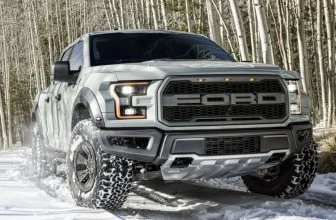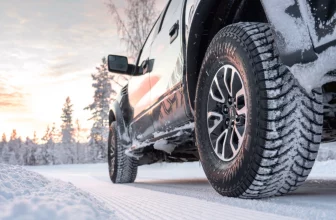How much time do you spend digging for information about car tires? Are you the type of driver that goes for brand names or the one that evaluates every alternative keenly? The jargon around car tires can be confusing.
You may end up with the wrong tire purchase and miss out on ultimate performances. Most drivers will settle for a set of tires that can comfortably handle driving conditions in all seasons. Passenger all-season tires are a good choice for drivers looking for modest summer and winter performances.
Although the tires do not qualify as performance tires, they blend the capabilities of winter tires and summer tires. Tire manufacturers are continuously innovating to enhance the capabilities of passenger all-season tires.
The tire market is flooded with several brands of passenger all-season tires. But are all these tires the same? How will you differentiate the best all-season tires from the rest of the pack? We endeavor to debunk all the confusion around tire selection. Our article highlights the best qualities that drivers need to look for in all-season tires.
Our recommendations are results-based and rely on practical results from the use of the tires. We simplify the decision-making process by comparing the performances of the tires against other categories in the market. In the end, we provide answers to some of the burning questions that drivers have.
| Tire name | Competitors Beaten | Overall Rating | Wet performance | Hydroplaning resistance | Wet traction | Dry performance | Cornering stability | Dry traction | Steering response | Winter/snow performance | Comfort performance | Ride quality | Noise score | Treadwear performance |
|---|---|---|---|---|---|---|---|---|---|---|---|---|---|---|
| Yokohama AVID S34PV | 100% | 8 | 7.8 | 7.8 | 7.9 | 8.5 | 8.3 | 8.8 | 8.4 | 7.1 | 8.5 | 8.5 | 8.4 | 7.4 |
| Bridgestone B380 RFT | 100% | 7 | 7.5 | 7.4 | 7.6 | 8 | 7.7 | 8.4 | 7.8 | 5.8 | 6.6 | 7.1 | 6.2 | 5.5 |
| Michelin Energy Saver A/S | 91% | 7 | 7.2 | 7.3 | 7 | 8 | 7.8 | 8.3 | 8.1 | 5 | 8 | 8.2 | 7.8 | 7.6 |
| Toyo NanoEnergy A29 | 88% | 7 | 6.5 | 6.9 | 6.1 | 7.8 | 7.8 | 7.9 | 7.7 | 5.8 | 7.7 | 8.1 | 7.4 | 7 |
| Goodyear Assurance Fuel Max | 87% | 7 | 7.2 | 7.2 | 7.2 | 7.5 | 7.2 | 8 | 7.3 | 5.6 | 6.9 | 7.2 | 6.6 | 7 |
| Firestone FR710 | 86% | 7 | 6.8 | 6.8 | 6.7 | 7.7 | 7.5 | 8.1 | 7.7 | 5.3 | 7.2 | 7.5 | 6.9 | 7 |
| Firestone All Season | 86% | 7 | 7.2 | 7.4 | 6.9 | 7.9 | 7.7 | 8.1 | 7.8 | 5.1 | 7 | 7.1 | 6.9 | 6.6 |
| Nexen Classe Premiere CP671 | 82% | 6 | 7 | 6.8 | 7.1 | 7.7 | 7.5 | 8.1 | 7.6 | 4.4 | 7.1 | 7.4 | 6.8 | 6.1 |
| Goodyear Assurance All-Season | 81% | 6 | 6.2 | 6.5 | 6 | 7.6 | 7.3 | 7.9 | 7.6 | 5.1 | 6.5 | 6.8 | 6.2 | 6.3 |
| Michelin Energy LX4 | 80% | 6 | 6.5 | 6.4 | 6.6 | 7.5 | 7.2 | 7.7 | 7.4 | 5.1 | 7.1 | 7.4 | 6.8 | 5.5 |
Desirable qualities of passenger all-season tires
What do manufacturers do to passenger all-season tires so that they can provide premium performances in all-weather conditions? How do they manage to balance the technical characteristics of these tires? Everything lies in the design process and optimization of internal and external tire features.
Superior treads for all-weather traction
Treads are the primary contact between the tires and the road. They grip firmly on the road to give drivers ample time steering and cornering on roads. As the primary contact surfaces, they suffer the most damage.
They peel off due to frictional wear and tear and weaken due to excessive heat. As seasons change, temperatures drop or rise in the process treads expand and contract. Without proper tire construction and material selection, the tires can deform permanently.
Tire manufacturers have come a long way in creating sustainable tread solutions. In the past, drivers required two sets of tires as it was impractical for one set to provide sufficient summer and winter traction.
The best all-season tires have flexible treads. Manufacturers mold these treads from all-season rubber compounds. They use advanced chemical additives to improve the resistance of the tires to heat damage and stiffening in extreme winter.
With passenger all-season tires, drivers enjoy better fuel consumption as most manufacturers try to minimize the rolling resistance of rubbers. Manufacturers are becoming smart when designing tread patterns on all-season tires. The tires feature aesthetic tread patterns on the circumference while optimizing their noise cancellation and traction capabilities.
As a result, drivers get to enjoy smooth, comfortable and quality rides. On top of that, the tires offer dependable wet, dry and snow traction.
Deep grooves for slippery roads
No matter the size of the passenger all-season tires, each driver needs assurance that the tires will defend them sufficiently against hydroplaning. When driving over rain, surface runoffs separate the tires from the tarmac. When this happens, the vehicle behaves as though it is floating. The roads become slippery, making it hard for drivers to handle cars.
Tire manufacturers envision driving experiences in rainy seasons. They perform iterative designs and tests on tires to gauge the sufficiency of the defenses against hydroplaning. One of the predominant features of the best all-season tires is circumferential grooves.
Some brands have optimized lateral grooves. The deep and wide grooves facilitate the optimum evacuation of water from the road surface so that drivers attain maximum traction on the tarmac.
How do manufacturers achieve impressive tire durabilities?
You can easily brush off passenger all-season tires as non-durable. They have simple constructions and lack the aggressiveness of all-terrain tires. The tires also have thinner sidewalls. It is surprising how long these tires can last.
Manufacturers select the best yet light materials for the production of these tires. They blend the all-season rubber materials with substantial quantities of silica. Traces of silica enhances the resistance of treads to abrasion and frictional tear.
Tire manufacturers and dealerships offer attractive warranties for the best all-season tires. Drivers can enjoy the premium performance for several tens of thousands of miles. Tire manufacturers provide visual indicators for drivers to monitor treadwear.
How do passenger all-season tires compare with other tire categories?
Enough of the praises. Are the performances of these tires best for all terrains? Are there road conditions that make these tires unsuitable? Here lie the answers.
The best all-season tires provide modest performances for all-weather driving. As the winter season peaks, the depth of snow and ice on the roads increases. The tires become unresponsive to steering controls. For regions that experience extreme winter conditions, drivers are advised to use specialized winter tires. That way, they get better traction.
Off-road driving is no mean fete. The irregular road surfaces present a myriad of challenges that redefine driving characteristics and behaviors. Tires become prone to punctures due to rock abrasion and cuts. Smaller aggregates occupy the grooves causing the tires to lose grip on the road. Drivers that frequent the off-road require all-terrain, specialized rock crawling, or mud-terrain tires for an ultimate experience.
Verdict
Passenger all-season tires rank as the most economical tires for an everyday commuter. The tires balance comfort, fuel efficiency, durability and all-weather traction in a single package. They offer superior performances with fewer models meeting the criteria for extreme weather driving. Any driver yearning for modest all-season performance needs to acquire a set of these tires.
Frequently Asked Questions
How much time do you spend digging for information about car tires? Are you the type of driver that goes for brand names or the one that evaluates every alternative keenly? The jargon around car tires can be confusing.
You may end up with the wrong tire purchase and miss out on ultimate performances. Most drivers will settle for a set of tires that can comfortably handle driving conditions in all seasons. Passenger all-season tires are a good choice for drivers looking for modest summer and winter performances.
Although the tires do not qualify as performance tires, they blend the capabilities of winter tires and summer tires. Tire manufacturers are continuously innovating to enhance the capabilities of passenger all-season tires.
The tire market is flooded with several brands of passenger all-season tires. But are all these tires the same? How will you differentiate the best all-season tires from the rest of the pack? We endeavor to debunk all the confusion around tire selection. Our article highlights the best qualities that drivers need to look for in all-season tires.
Our recommendations are results-based and rely on practical results from the use of the tires. We simplify the decision-making process by comparing the performances of the tires against other categories in the market. In the end, we provide answers to some of the burning questions that drivers have.
Desirable qualities of passenger all-season tires
What do manufacturers do to passenger all-season tires so that they can provide premium performances in all-weather conditions? How do they manage to balance the technical characteristics of these tires? Everything lies in the design process and optimization of internal and external tire features.
Superior treads for all-weather traction
Treads are the primary contact between the tires and the road. They grip firmly on the road to give drivers ample time steering and cornering on roads. As the primary contact surfaces, they suffer the most damage.
They peel off due to frictional wear and tear and weaken due to excessive heat. As seasons change, temperatures drop or rise in the process treads expand and contract. Without proper tire construction and material selection, the tires can deform permanently.
Tire manufacturers have come a long way in creating sustainable tread solutions. In the past, drivers required two sets of tires as it was impractical for one set to provide sufficient summer and winter traction.
The best all-season tires have flexible treads. Manufacturers mold these treads from all-season rubber compounds. They use advanced chemical additives to improve the resistance of the tires to heat damage and stiffening in extreme winter.
With passenger all-season tires, drivers enjoy better fuel consumption as most manufacturers try to minimize the rolling resistance of rubbers. Manufacturers are becoming smart when designing tread patterns on all-season tires. The tires feature aesthetic tread patterns on the circumference while optimizing their noise cancellation and traction capabilities.
As a result, drivers get to enjoy smooth, comfortable and quality rides. On top of that, the tires offer dependable wet, dry and snow traction.
Deep grooves for slippery roads
No matter the size of the passenger all-season tires, each driver needs assurance that the tires will defend them sufficiently against hydroplaning. When driving over rain, surface runoffs separate the tires from the tarmac. When this happens, the vehicle behaves as though it is floating. The roads become slippery, making it hard for drivers to handle cars.
Tire manufacturers envision driving experiences in rainy seasons. They perform iterative designs and tests on tires to gauge the sufficiency of the defenses against hydroplaning. One of the predominant features of the best all-season tires is circumferential grooves.
Some brands have optimized lateral grooves. The deep and wide grooves facilitate the optimum evacuation of water from the road surface so that drivers attain maximum traction on the tarmac.
How do manufacturers achieve impressive tire durabilities?
You can easily brush off passenger all-season tires as non-durable. They have simple constructions and lack the aggressiveness of all-terrain tires. The tires also have thinner sidewalls. It is surprising how long these tires can last.
Manufacturers select the best yet light materials for the production of these tires. They blend the all-season rubber materials with substantial quantities of silica. Traces of silica enhances the resistance of treads to abrasion and frictional tear.
Tire manufacturers and dealerships offer attractive warranties for the best all-season tires. Drivers can enjoy the premium performance for several tens of thousands of miles. Tire manufacturers provide visual indicators for drivers to monitor treadwear.
How do passenger all-season tires compare with other tire categories?
Enough of the praises. Are the performances of these tires best for all terrains? Are there road conditions that make these tires unsuitable? Here lie the answers.
The best all-season tires provide modest performances for all-weather driving. As the winter season peaks, the depth of snow and ice on the roads increases. The tires become unresponsive to steering controls. For regions that experience extreme winter conditions, drivers are advised to use specialized winter tires. That way, they get better traction.
Off-road driving is no mean fete. The irregular road surfaces present a myriad of challenges that redefine driving characteristics and behaviors. Tires become prone to punctures due to rock abrasion and cuts. Smaller aggregates occupy the grooves causing the tires to lose grip on the road. Drivers that frequent the off-road require all-terrain, specialized rock crawling, or mud-terrain tires for an ultimate experience.
Verdict
Passenger all-season tires rank as the most economical tires for an everyday commuter. The tires balance comfort, fuel efficiency, durability and all-weather traction in a single package. They offer superior performances with fewer models meeting the criteria for extreme weather driving. Any driver yearning for modest all-season performance needs to acquire a set of these tires.
Frequently Asked Questions
Are all-season tires dependable for snow driving?
The best all-season tires provide remarkable winter traction. The performance reduces as you drive into deep snow. Exercise caution when driving in winter since the roads are slippery.
Are all-season tires dependable for snow driving?
The best all-season tires provide remarkable winter traction. The performance reduces as you drive into deep snow. Exercise caution when driving in winter since the roads are slippery.
Do brands matter when buying all-season tires?
The capabilities of the tire should take center stage in your selection process. Although some well-known brands offer reputable products, smaller brands may have better performance.






